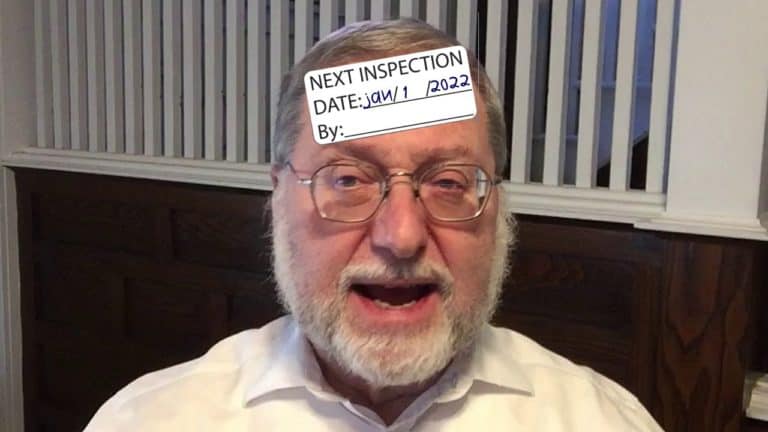Now that we have transitioned from the month of Tishrei, full of festivals and special days and prayers, we arrive at MarCheshvan, a month completely devoid of any festivals or special days. I think that during this time it is worthwhile to focus on our regular, daily prayers and their significance. During the morning service just after the silent prayer and it’s repetition by the Hazan (Cantor) a designated section of the Torah is read aloud from a scroll. This is done on Mondays and Thursdays, as well as on Sabbaths, Festivals and Fast days. The practice of reading from the Torah every Monday, Thursday and on every Sabbath and Festival actually dates back to Moses. Moses did not want the Jewish people to ever go more than three days without reading and studying the Torah in public. With his decree of readings on Monday, Thursday and the Sabbath, no would ever be more than three days away from hearing the Torah. Later in history, Ezra the Scribe, decreed that the Torah also be read at afternoon services on the Sabbath, in order to engage even the idle and ignorant in some Torah study. Ezra also specified the minimum number of verses that should be read each time.
The Torah portion is always connected in some way to the events that occurred on that day in history. The Torah states, “And Moses declared the appointed festivals of God to the Children of Israel.” The Talmud understands that Moses was teaching the Jewish people to read, study and engage in relevant Torah portions at their appropriate times.
On a deeper level, the reading the Torah in public is much more than a fulfilment of the mitzvah of Torah study. A Biblical commandment obligates us to study the Torah every single day, so even without the decree of Moses, a Jew should never be even a day away from Torah study. Evidently, Moses must have had an additional goal in mind when he decreed the public Torah reading. A closer examination of the laws of the Torah reading reveal the true nature and deeper purpose of this ceremony. The public reading may be performed only in the presence of a community; representatives of all elements of the Jewish people participate (Cohen, Levi, Israel); it is read from the bimah, a lectern in the middle of the synagogue; at one point the scroll is lifted high, the community declares that “This is the Torah that Moses placed before the Children of Israel, upon the command of G-d, through Moses’ hand.” These characteristics of the reading suggest that what is taking place is not merely reading from a Torah scroll, but actually re-enacting the revelation of the Torah on Mount Sinai and re-accepting the Torah anew every time that it is read. The Bimah, like the mountain, is surrounded by the people; a Gabbai acts as an intermediary like Moses, to call the Jews to the Torah; and the community proclaims together their acceptance of the Torah as they did at Mount Sinai. With the fulfilment of this practice, there is never a period when the Jewish people are more than three days journey from the revelation at Mount Sinai and from the acceptance of the Torah.
The universal practice is to read through all of the Five Books of Moses over the course of the year. In this way one actually hears the entire Torah sung in the traditional tune and pronounced with care every year. The community studies the portion, known as the Parsha, during the week preceding its reading, usually with translations and commentaries. When these laws and practices are properly observed, the result is a Biblically literate, well-versed people that rightfully deserves the appellation “The People of the Book.”
One of my most enduring childhood memories is of my father, OBM, reviewing the portion of the week with the commentary of Rashi while waiting for customers in his store. The entry of a customer for most storeowners is a moment of joy in anticipation of making a sale. I always felt that for my father, it was a bit of an annoyance to have to stop his learning for business. When I was first introduced to my wife’s grandmother OBM, it was a Friday afternoon, and I saw an elderly lady holding a piece of paper the size of building plans. The paper was an enlarged copy of the parsha made by her grandchildren, so that even with her failing eyesight she would be able to read all the commentaries.
Aside from the regular portion of the week a designated section of the Torah is read on each festival and fast day. These selections usually consist of the parts of the Torah dealing with the observance or origin of that festival and the verses detailing the Temple service for that occasion. On Sabbaths and Festivals, additional readings are recited from the books of the Prophets, known as the Haftarah. The practice of reading from the prophets dates to a time of persecution when Jews were forbidden to read publicly from the Torah. The Rabbis decreed that the community substitute a section of the prophets relevant to the Torah portion of that week, or to the festival or fast day. We retain this practice today, even though the decree is long gone, to gain inspiration from the words of the prophets.

